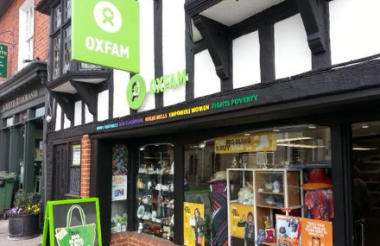Yesterday the Jeremy Vine Show asked whether we need more curbs on charity shops. David Ainsworth says the answer is no.
Yesterday the Jeremy Vine Show addressed the question of whether we should limit the number of charity shops on the high street, and whether those shops get an unfair deal by being exempt from business rates.
These complaints are longstanding, and tend to come from local councillors – who want the money – and small business owners, who feel that charity shops provide unfair competition.
It’s easy to understand where the small businesses are coming from. Theirs is a precarious existence, hemmed in by costly legislation and red tape, and facing competition on every side from bigger retailers. Seeing charities getting a free ride when they are getting hammered by rate rises must be particularly galling.
But blaming charities is hardly the right answer. Research by the Charity Retail Association, who sponsor our annual Charity Shops Survey, has found any number of positive externalities, in addition to the cash they directly give to charities: they prevent goods from going to landfill, they provide support to volunteers, they occupy properties which would likely otherwise be empty, and they inform local people about services they can access. And obviously, they help people on limited incomes buy good quality clothes.
There is also some evidence that they promote their charities’ brand. Some charities have suggested that there are legacy hotspots around shops.
In short, charity shops are a good thing for the high street.
Removing the tax relief would probably hugely reduce the number of charity shops, because shops are highly dependent on these tax reliefs for their profits. Making them pay business rates would reduce margins by a quarter. They simply wouldn’t be able to provide those benefits if they had to pay current commercial rates.
On the other hand, charities have to face up to the reality of the situation. It’s no use blaming small retailers for feeling it’s unfair. Nor can you really blame local people who want a high street full of variety. I don’t think a high street full of nothing but charity shops should be seen by the sector as a great success.
I don’t think even charity retailers want to be the only shops on the high street. I doubt most charity shop managers look out at a high street with twelve other similar shops and think: “Oh, good, more competition”.
It is very hard to be a small retailer on the high street. The government’s most recent rate review is hardly going to help either. Because the high street in general is in crisis and charity shops are hardly to blame. Out-of-town superstores and the internet have bowdlerised most shopping centres, and charities, though they are in some ways beneficiaries of this, ought to be fighting against it. The big charities have a duty as retailers to improve the environment in which they operate.
The question is what would replace charity shops if there were limits on the numbers. Sadly the truth is that in many places, it would be payday lenders, pawnbrokers and betting shops full of fixed-odds terminals.
You might also be interested in...
I suspect that actually most people who use high streets would feel very differently if it was quaint cafes, independent bookshops and greengrocers selling fresh food. These shops have positive externalities which they don’t profit from. People like having them around much more than they like buying goods in them.
The answer, for me, is that charities, particularly charity retailers, should support changes to business rates for everyone else on the high street. If the current tax system is crippling the prospect of small businesses, use your clout to help those small businesses more exemptions and protections. Then they won’t blame the charity shops for a bad law.
Related articles












